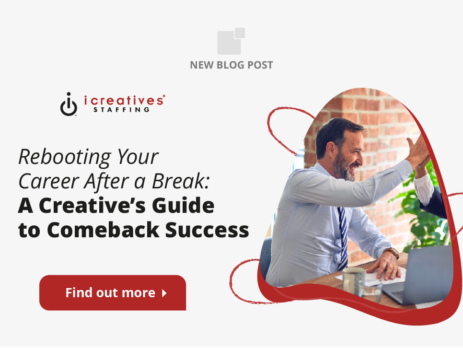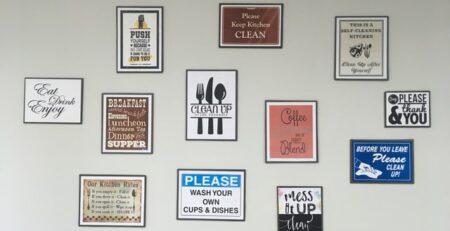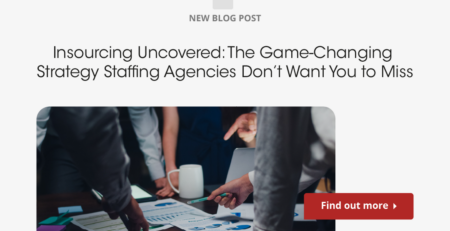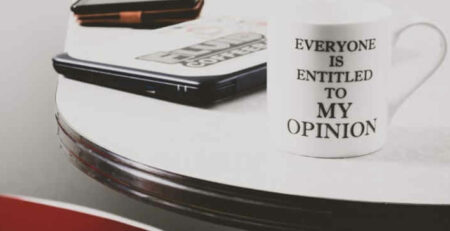Rebooting Your Career After a Break: A Creative’s Guide to Comeback Success
Career breaks happen for countless reasons—caregiving, health, burnout, layoffs, entrepreneurship, or a creative sabbatical. For designers, writers, illustrators, marketers, and producers, stepping away can feel risky. But a pause doesn’t erase your craft—it can sharpen it. The key is to re-enter with a plan: a clear story, focused skill tune-ups, fresh proof of value, and a network that knows what you’re aiming for now.
In a shifting market, hiring teams optimize for momentum and signal: results shipped, problems solved, and judgment earned. Your job isn’t to hide the break; it’s to translate it. Show how your perspective matured, how your skills map to current needs, and how quickly you’re already delivering again—through small wins, not sweeping promises. That credibility lets people see you as an immediate contributor.
This guide covers the questions creatives ask most when returning: how to explain the gap, what to do in your first 90 days, how to rebuild a portfolio without recent work, where to upskill with high ROI, and how to rebuild a network that creates real opportunities. Each section offers scripts, templates, and checklists you can use today.
Think of your comeback as a product launch. You’ve got an audience (target employers/clients), a value proposition (your creative specialty), a roadmap (your 30/60/90-day plan), and a go-to-market strategy (portfolio, outreach, and interviews). When you treat your return strategically, you reduce friction for the people deciding to hire you—and that accelerates “yes.”
Use this long-form article as a playbook. Skim the questions, jump to what you need, and bookmark the tools. Even a few focused hours a week can compound into interviews, offers, and renewed confidence.

How do I explain a career break without hurting my chances?
Hiring managers don’t expect a flawless timeline; they expect a clear, credible story that shows you’re ready to create value now. The best explanation is brief, neutral, and followed by proof. Your goal is to help the interviewer move from “Why the gap?” to “How fast can you help us?”
A simple three-part framework works across scenarios. 1) One-sentence reason for the break, 2) One-sentence bridge to the present, 3) One or two proof points that show you’re current and effective. Keep it factual and future-focused.
Use this structure when speaking or writing: acknowledge, bridge, prove. The tone should be matter-of-fact—no oversharing, no defensiveness, no apologies. Then pivot immediately to your portfolio or recent wins.
- Acknowledge: “I stepped away from full-time work in 2023 to care for a family member.”
- Bridge: “They’re stable now, and I’m fully available.”
- Prove: “In the last 8 weeks, I shipped a brand refresh for a nonprofit and redesigned two onboarding flows that cut task time by 32% in tests.”
If you struggle with concision, practice the STAR method (Situation, Task, Action, Result) to shape your talking points. It keeps you anchored in outcomes and prevents rabbit holes that drain interview time. A quick primer: The STAR interview method explained.
Protect your privacy and stay professional. Broad HR guidance aligns on factual, minimal disclosures; if you want a reference perspective, see how HR thinks about employment gaps and what matters most in evaluation: SHRM on addressing employment gaps.
On your resume/LinkedIn, label the break without euphemisms (“Career Break — Caregiving, 2023–2024”). Add bullets for relevant activities (courses, volunteer client work, personal projects) with outcomes. This reframes a gap into a bridge.
Finally, rehearse out loud. Record yourself, refine your one-liner, and practice pivoting to your work. For deeper interview prep tailored to creatives, this resource helps you structure answers and anticipate curveballs: Essential interview tips for creatives.
What should my first 90 days look like to relaunch my creative career?
A 30/60/90 plan turns anxiety into action. In the first month, you calibrate; in the second, you create; in the third, you convert. Treat it as a living roadmap tied to outcomes: portfolio assets shipped, conversations booked, interviews secured, and offers in motion.
Days 1–30 (Calibrate): Clarify your target roles and industries, audit your skills, and define a simple positioning statement. Refresh your resume and profiles, and draft project briefs for 1–2 fast, high-impact pieces you’ll ship next month.
Days 31–60 (Create): Build or refresh 2–3 portfolio projects that mirror real job requirements. Aim for shippable, scoped work: a landing page with analytics, a brand kit with a social system, a motion teaser with storyboard and metrics.
Days 61–90 (Convert): Launch targeted outreach campaigns, apply to aligned roles, line up warm referrals, and run interview reps. Keep shipping small improvements weekly while you scale conversations.
Time-block creatively. Use short sprints to protect focus for portfolio building and applications. If you like structure, test the Pomodoro approach to keep momentum: The Pomodoro Technique.
Keep an ROI mindset. Each week, ask: what shipped, what moved conversations forward, and what to stop doing? Trim low-yield tactics quickly and double down on channels producing replies or interviews.
Plan around constraints and energy. If you’re balancing caregiving or part-time work, scale the plan to what’s sustainable—from two big rocks a week to one. Consistency beats intensity.
If your research shows stronger opportunities adjacent to your past niche, consider a strategic pivot. For a step-by-step approach to shifting lanes without starting over, see this practical guide: Building a career in a new industry.
How do I update my portfolio when I have few recent projects?
Your portfolio is a product, not a scrapbook. It should prove that you can identify a problem, craft a solution, and ship outcomes—right now. You don’t need permission to create that proof; you need relevant briefs, focused scope, and measurable impact.
Don’t wait for a client. Self-initiated work, redesigns, and collaborations can be just as compelling if they’re grounded in real constraints and user outcomes. Aim for 2–3 projects that mirror the content of job descriptions in your target roles.
Pick briefs where you can show the full arc: problem framing, exploration, decisions, and results. If you lack data, use small tests (polls, first-click tests, or user interviews) to generate light evidence. Even a 5-person usability pass can surface insights worth showing.
Use the table below to pick fast, credible project sources and scope them tightly.
| Source | What to ship | Scope target | Time budget |
| Open-source | UI/brand cleanup, docs revamp | 1–2 screens + guidelines | 10–15 hrs |
| Volunteer | Brand kit + social toolkit | Logo, palette, 6–8 templates | 12–20 hrs |
| Redesign | Landing page with A/B variants | Hero, value props, CTA, mobile | 8–12 hrs |
| Collab | Motion teaser + storyboard | 20–30 sec, captions, cover art | 10–15 hrs |
| Case remix | Old project reframed for clarity | Problem, trade-offs, results | 6–10 hrs |
To find open-source opportunities that need design help, check curated listings at Open Source Design jobs. For skills-for-good work with real stakeholders, explore projects via Catchafire’s nonprofit projects.
Structure each case study the same way: the problem (why this mattered), your approach (what you did and why), and the outcomes (what changed). Use scannable subheads, a few process artifacts, and a simple metric or proxy metric to quantify impact.
Give hiring managers the story they need to vouch for you internally. Show constraints, trade-offs, and rejected paths. That honesty reads as judgment, which is what teams hire for.
Polish matters, but clarity matters more. Use consistent typography, spacing, and accessible color contrast. Provide mobile views if relevant, and annotate decisions so reviewers don’t have to guess.
Publish where your audience looks. A clean personal site with 2–3 deep cases beats 12 thin galleries. Share highlights on Behance and social to drive traffic, and always include contact info and a direct case link in applications.
Curate ruthlessly. If a project doesn’t strengthen your narrative for your target role, archive it. Your portfolio is a filter as much as it is a showcase.
Where should I upskill quickly without wasting time or money?
Upskilling after a break works best when it’s “just-in-time,” not “just-in-case.” Choose skills tightly tied to the roles you’re targeting and build small projects that prove you can apply them immediately.
Start with an outcome. Pick a job description you love and highlight the top three skills it demands that you’re light on. Make those your learning sprint. If a skill won’t help you ship a portfolio project or answer an interview question, it can wait.
Favor micro-programs and short courses with practical assignments over sprawling curricula. Look for syllabi that include deliverables you can publish—brand systems, landing pages with analytics, motion pieces with storyboards, or content style guides.
University-backed and industry-backed platforms offer credible, flexible options. Browse targeted programs on Coursera and pick courses with capstones you can showcase in your portfolio or on LinkedIn.
If you prefer academic depth, scan modular courses on edX. Filter for assignments that mimic real creative briefs and include peer feedback or instructor critique.
Make practice public. Turn each module into a shareable artifact—a component library, a spec sheet, a storyboard, a mini case study. Posting in-progress work builds momentum and invites helpful feedback.
Lean into adjacent skills that boost your leverage: creative ops, briefing, stakeholder management, and measurement. A great creative who can scope work, run a review, and report results is invaluable.
Use light tools to accelerate learning: style guides, design tokens, copy frameworks, and project checklists. The goal is to reduce cognitive load so you can focus on the creative decisions that matter.
Track ROI. For every course, note cost, hours, and outcomes (portfolio piece, interview questions answered, recruiter replies). If the yield is low, switch providers or formats quickly.
Cap each sprint with a small, real project. Nothing validates learning like shipping something that solves a problem—even if it’s for a community group, a local shop, or your own brand.
How do I rebuild my network and find opportunities fast (returnships, freelance, full-time)?
A strong network collapses search time. After a break, your first job is to make it easy for people to help you: a crisp positioning line, two or three standout projects, and specific asks tied to roles and companies.
Think in channels: past colleagues, communities, targeted cold outreach, platforms, and programs. Each needs a repeatable playbook and a simple tracker so you can see what’s working.
Warm reactivation is highest yield. Send short, no-pressure notes to former teammates and clients. Share one recent project, the roles you’re targeting, and ask for advice or a 15-minute catch-up—not a job. People help when it’s specific and easy.
- Subject: “Quick hello + 30-second update”
- Body: one-line reason for the break, one-line present focus, one link to a fresh project, and a simple ask
- Close: appreciation and a flexible time window
Mentorship accelerates momentum. Book a few sessions with creatives in your target niche to pressure-test your portfolio and positioning. A great directory to find volunteer mentors is ADPList.
If you’re returning after caregiving or a long pause, explore returnship programs built for re-entry. They combine training with hands-on projects and can convert to offers. A good starting point is Path Forward’s return-to-work programs.
Freelance can be a fast on-ramp to fresh results, references, and cash flow. Clarify services, scope, and pricing, then pitch directly to a shortlist of ideal clients. For a clear self-marketing playbook tailored to creatives, see: How to market yourself as a freelancer.
Targeted applications beat volume. Focus on companies where your work clearly maps to their current initiatives. For startup opportunities with creative breadth, scan curated roles on Wellfound (AngelList) and filter by your niche.
Create a small referral flywheel. After every good conversation, ask who else you should speak with, then follow up promptly. Send concise thank-yous with a link or artifact that makes you memorable.
Share your work where your peers and hiring managers gather. A consistent trickle of in-progress shots, breakdowns, and learnings on platforms like Dribbble can spark DMs and invitations. Add a one-line CTA with your availability.
Keep a lightweight CRM: a spreadsheet with names, notes, next steps, and dates. Track replies and outcomes weekly. Networking compounds—your future self will thank you for the paper trail.
Conclusion
Your break is a chapter, not the whole story. What matters is the comeback—how you clarify your narrative, prove your skills, and build momentum through focused work and conversations. When you approach the process like a product launch, you replace uncertainty with a repeatable system.
The fundamentals are simple: a brief, honest explanation of your gap; a 30/60/90 plan you can actually sustain; a portfolio that shows decisions and outcomes; targeted learning that becomes shippable work; and a network flywheel that keeps opportunities circulating.
Creatives thrive on constraints. Treat time, energy, and attention like design materials. Scope projects tightly, publish often, and let evidence—not perfection—do the persuading. Small wins stack into credibility fast.
Be explicit about the value you bring and the problems you love to solve. Hiring managers and clients are scanning for signals: clear thinking, relevant taste, reliable delivery. Give them artifacts that make saying “yes” easy.
Stay adaptable. Markets shift, platforms evolve, and tastes change—but craft, curiosity, and consistency outlast trends. Keep a feedback loop with mentors, peers, and metrics to guide your next iteration.
Above all, lead with generosity and momentum. Share what you’re learning, help others where you can, and keep shipping. That’s how a break becomes a launchpad—and how your next role becomes your best one yet.
In today’s competitive market, finding the right creative and marketing expert can be a challenge. But with icreatives, you’re in experienced hands. With 37 years in staffing and a track record of matching more than 10,000 employees to over 1,000 companies worldwide, we know how to connect you with the best. Plus, you only pay if you hire—there’s no risk, only results. Ready to find your perfect creative or marketing expert? HIRE WITH ICREATIVES today!












